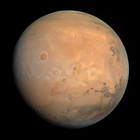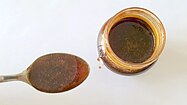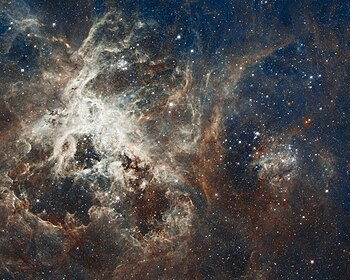Wikipedia:Main Page alternatives/(Italian-style)
Welcome to Wikipedia, the free encyclopedia!
|
How to register · Essential Guide · Frequently asked questions · Community Portal · Disclaimer | Donations | More main page alternatives |
Users just like you have created this free multilingual encyclopedia. This version in English was started in 2001 and currently includes 6,823,749 articles, written as free content and from a neutral point of view. You can create and edit articles too: see the Essential Guide or try out the Sandbox; and be sure to visit the Community Portal.
|
May 14: Feast day of Saint Matthias (Catholicism); Independence Day in Israel (2024)
Mars is the fourth planet from the Sun. It was formed approximately 4.5 billion years ago, is a terrestrial planet and is the second smallest of the Solar System's planets with a diameter of 6,779 km (4,212 mi). A Martian solar day (sol) is 24.5 hours and a Martian solar year is 1.88 Earth years (687 Earth days). Mars has two small and irregular natural satellites: Phobos and Deimos. Carbon dioxide is substantially present in Mars's polar ice caps and thin atmosphere. It has the highest mountain in the solar system, Olympus Mons, and the largest canyon, Valles Marineris. There are large annual temperature swings on the surface, between −78.5 °C (−109.3 °F) and 5.7 °C (42.3 °F) – similar to Earth's seasons. Due to its geological history, the possibility of past or present life on Mars remains of great scientific interest. Mars has been explored by uncrewed spacecraft and rovers, and is an attractive target for future human exploration missions. (This article is part of a featured topic: Solar System.)
Recently featured:
|
Every page on Wikipedia is a collaborative effort. But there are some special places reserved for specific types of discussion and assistance. Find what you're looking for here:
| |||||
| ||||||
|
Wikipedia is written by volunteer editors and hosted by the Wikimedia Foundation, a non-profit organization that also hosts a range of other volunteer projects:
|










